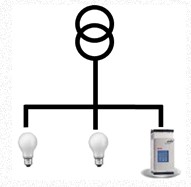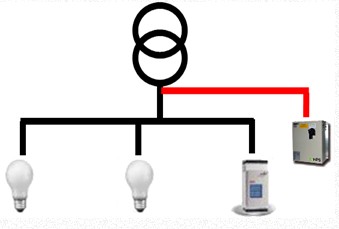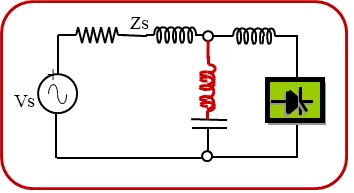
|
S1= apparent power
P1= active power
Q1= power factor demanded |
S2= apparent power after compensation
P1= active power
Q2= power factor demanded after compensation
Qc= compensated power factor |
Capacitors + harmonics
Network without capacitors

Pollution is proportional to the currents of the perturbing loads.
Network with capacitors

The presence of voltage harmonics causes abnormally high currents through the capacitors. The presence of capacitors does not generate harmonics, but can amplify the existing harmonics Capacitors are very sensitive to harmonics:
-They have low impedance
-This impedance is even lower with high frequencies
-Therefore they absorb harmonic currents quite easily, which greatly reduces their service life.
To avoid this, the resonance frequency must be changed for a value not resonant with any of the existing harmonics. This can be done introducing a special reactor in series with the capacitors, but never on existing capacitor banks!!

Interesting information about capacitors
The two biggest enemies of capacitors:
Harmonics
They increase the voltage on the capacitor terminals They overheat and reduce the life expectancy of the dielectric
Temperature
The life expectancy of a capacitor is specified for a maximum working temperature of 35ºC, with a +5% of maximum increase for a short time.
For every 5ºC of permanent working temperature increase the life expectancy is reduced 50%.